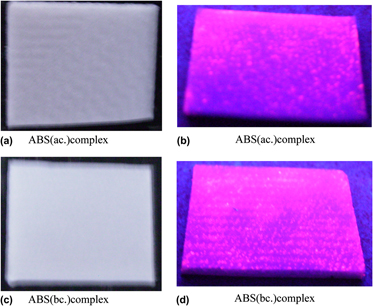Crossref Citations
This article has been cited by the following publications. This list is generated based on data provided by
Crossref.
Azevedo, Caroline B.
de Souza, Érica A.
de Faria, Emerson H.
Rocha, Lucas A.
Calefi, Paulo S.
Ciuffi, Katia J.
and
Nassar, Eduardo J.
2013.
Optical properties of Eu-doped hybrid materials prepared from dimethyl and methyl alkoxides precursors.
Journal of Luminescence,
Vol. 134,
Issue. ,
p.
551.
Hu, Xiaoxi
Deng, Ziwei
Wang, Yun
and
Yin, Yanzhen
2014.
Study on the Interaction Between Bovine Serum Albumin and Terbium Complex Containing Polymer.
Soft Materials,
Vol. 12,
Issue. 3,
p.
277.
Uzun, Nelson
Martins, Thomás Duzzi
Teixeira, Gabriella Machado
Cunha, Nayanne Larissa
Oliveira, Rogério Belle
Nassar, Eduardo José
and
dos Santos, Raquel Alves
2015.
Poly(l-lactic acid) membranes: Absence of genotoxic hazard and potential for drug delivery.
Toxicology Letters,
Vol. 232,
Issue. 2,
p.
513.
Blankenburg, Lars
Sensfuss, Steffi
Schache, Hannes
Marten, Jan
Milker, Roland
and
Schrödner, Mario
2015.
TPD wide-bandgap polymers for solar cell application and their sensitization with small molecule dyes.
Synthetic Metals,
Vol. 199,
Issue. ,
p.
93.
Hu, Xiaoxi
Tong, Zhangfa
Wang, Yun
Liao, Dankui
Yin, Yanzhen
and
Wen, Feng
2019.
Investigation of the interaction between protein and europium doped polymer.
Journal of Macromolecular Science, Part A,
Vol. 56,
Issue. 1,
p.
42.
dos Santos Filho, Leodoro P.
de F. P. Nascimento, Maria P.
Marçal, Liziane
Ciuffi, Katia J.
e Silva, Márcio L. A.
Nassar, Eduardo J.
and
Rocha, Lucas A.
2021.
(−)-Hinokinin antimicrobial agents into functionalized mesoporous silica.
Journal of Sol-Gel Science and Technology,
Vol. 98,
Issue. 2,
p.
342.
Pontes, Lauany M.
de Carvalho, Leonardo L.
Rocha, Lucas A.
Ferreira, Natália H.
Tavares, Denise C.
Dias, FernandaG.G.
Nassar, Eduardo J.
da Silva, JorgeV.L.
de Oliveira, Marcelo F.
and
Maia, Izaque A.
2021.
Hydroxyapatite incorporation into polyamide membrane.
Materials Chemistry and Physics,
Vol. 271,
Issue. ,
p.
124877.
da S. Padilha, Juliana
Azevedo, Marcelo F.M.F.
Miranda-Andrades, Jarol R.
De Falco, Anna
Kai, Jiang
and
Aucelio, Ricardo Q.
2022.
Use of selective quenching of a photoluminescent probe based on a Eu(III) β-diketonate complex for determination of methylmercury in produced water after liquid-liquid extraction.
Talanta,
Vol. 244,
Issue. ,
p.
123406.
Gurung, Govinda
Tamang, Shree Krishna
Parajuli, Raj Kumar
Snow, Christopher D.
Kipper, Matt J.
Belfiore, Laurence A.
and
Tang, Jianguo
2024.
Doping Styrene Butadiene Rubber with Eu3+-Induced Diblock Copolymer Nanoaggregates Enhances Mechanical Properties and Enables Stretching-Enhanced Luminescence.
ACS Applied Polymer Materials,
Vol. 6,
Issue. 23,
p.
14331.



